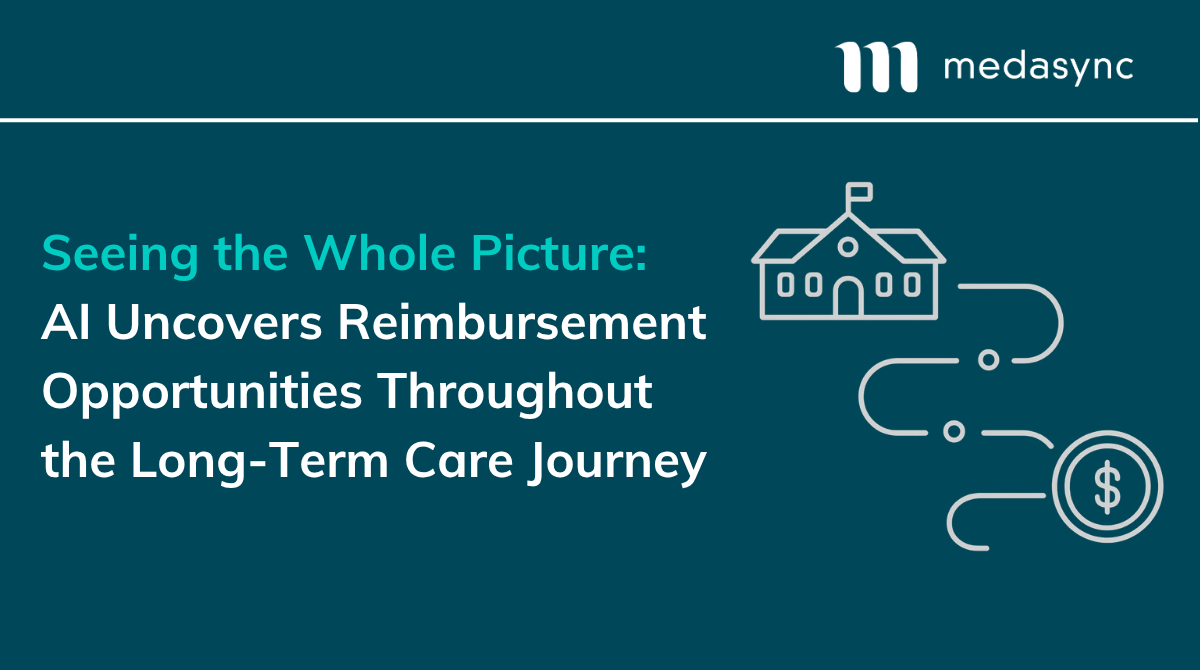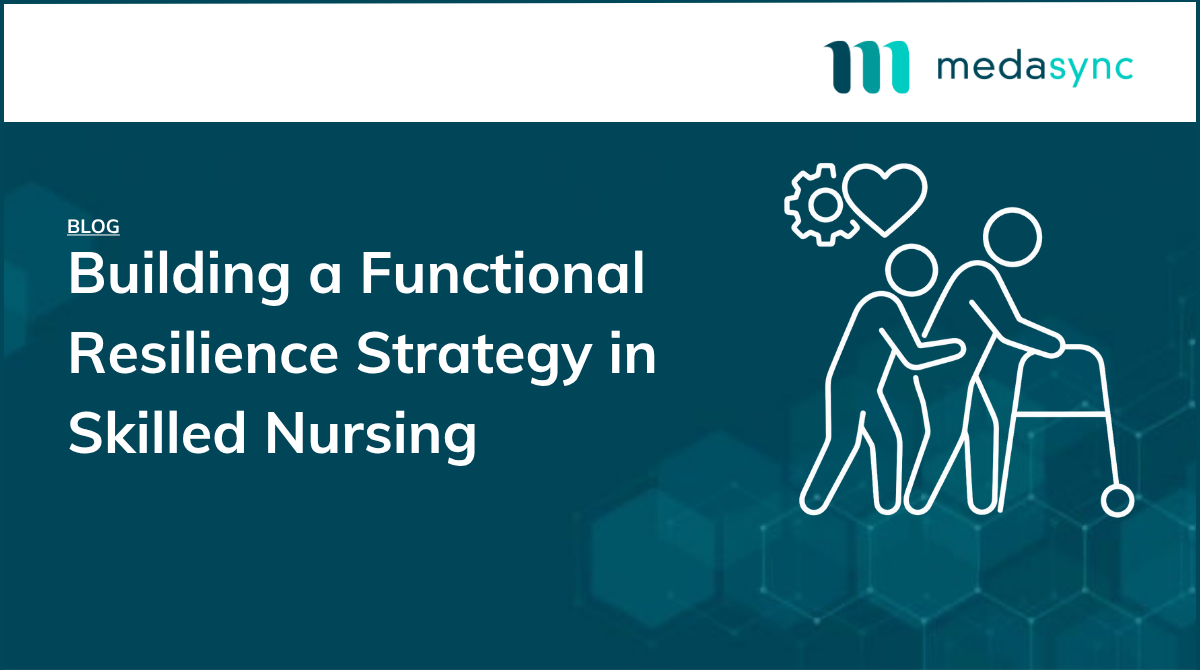Pre-Service: Achieving Success Despite Increasing Complexity
As a Nursing Home Operator, You’re Likely Facing More Challenges Than Navigating PDPM
As SNF owners and operators, we are constantly focused on new rules; increasing regulation, elections, and demographic changes; and most importantly, filling beds and providing high-quality care. We put in the work for PDPM, and most of us are seeing a rate bump. But are we paying close enough attention to all of the little details that facilitate getting payment for services rendered? Amid the increase in complexity, have we tightened up all the pre-service and in-stay processes to ensure smooth billing and collections to avoid claims adjustments and lost revenue? These are clawbacks that quietly drain much-needed cash from our businesses.
A decade ago, the revenue cycle was less complex. Private pay patients paid in advance, and Medicare and Medicaid billing and collection protocols were a breeze for most providers. Today, it’s a different world.
The proliferation of managed care has become an animal of its own for both Medicare and Medicaid. According to CMS, the average number of Medicare Advantage plan choices per county will increase from about 33 plans in 2019 to 39 plans in 2020. This represents an increase of 49 percent since 2017. Each plan has its own contract requirements and billing rules, and most are more prescriptive and rigorous than what the government requires. This increasing number and complexity of contracts can lead to a huge problem with contractual adjustments and bad debts. These are often triggered by issues ranging from minor documentation mistakes to providing services not authorized by payers — resulting in a denial of payment for a submitted claim.
And, to add to the managed care complexity, PDPM requires staff to evaluate five times as many data points for patient conditions as the old system. We know we’re all dealing with PDPM overload now, so we’ll spare you those details.
The remedy here is strong revenue cycle management (RCM), encompassing a set of internal processes from pre-admission to billing that will help to facilitate timely collection for services rendered. RCM centralizes these often-fragmented activities and pulls them together as one integrated process that follows revenue from pre-admission to payment.
Revenue cycle management requires that an operator understand all of the administrative and clinical requirements of each payer contract, understand the new PDPM drivers, and establish processes to ensure compliance with all of the specific contract terms. Many SNFs often mistakenly focus on the billing process, when the source of the lost revenue usually occurs very early in the revenue cycle process — at or before the time that the patient is admitted.
Best Practice is Always Going to Start with Pre-Service
While there’s no one magic bullet for revenue cycle management, successful operators have found that a strong pre-admission process is a key ingredient. Data must be accurate to paint the best picture of the patient to secure the proper resources.
We all know to run the insurance and verify primary and secondary payers, plus look at medications, equipment needs, patient needs, and condition. But to gain insurance certification from most managed care payers, you also need to gather and submit key documents and pieces of information from the referral such as:
- The patient’s H&P in the last 7 days
- Nursing notes within the last 48 hours
- Medication list (currently at the hospital and anticipated discharge medications)
- Therapy notes and evaluations for PT, OT, and ST within the last 48 hours
And, depending upon the case, you may also need to share additional information like wound stage and dressing; IV delivery frequency and the type of port; or the TPN formula, rate, and frequency. And for PDPM payers, mining the referral packet to understand the resident’s story leads to early investigation opportunities for potential NTAs and ICD10 clarification. The workflow here is two parts data collection and one-part tracking down the authorization. It’s important to identify who is doing what.
For example, if you have a centralized intake process through your corporate office, who’s responsible at the building for collecting all the information or picking up the process in case the team is backed up? Is marketing running down documents from the referral source? How is that shared with the off-site intake team? Who is looking at service needs relative to the contract and advocating? And, above all, where are you saving all this information (documents from the hospital, insurance authorization, forms, etc.) so it’s easily searchable and accessible when you’re dealing with a potential audit or an appeal down the road?
Pre-Service Management Done Correctly
- Contract understanding is imperative. Many operators take what they’re given by MCOs. Meaning, they may accept a patient at the wrong level, often by default, because they’re not comparing service needs to the contract’s rate sheet and conditions. Another example is understanding what constitutes an exclusion or carve-out. Both of these misses can be minimized with a strong pre-admission process that includes a contract review ahead of time, allowing case managers to track down authorizations where needed in advance, ensuring they’re captured for billing.
- Specialize when possible. Several of the tasks to be completed pre-admission are different in a managed care case as opposed to a traditional Medicare case — especially since PDPM has been implemented. If your admissions or intake staff are spending close to 50 percent of their time or more on managed care authorizations, it may be time to consider a divide and conquer strategy to specialize a resource on just managed care or PDPM payers. This is often very effective for independent buildings with high managed care utilization or chains with a shared resource model.
- Assess your current flow of information. How you obtain the resident admission packet depends on your SNF, your current staffing, the hospital that referred them, and so on. Regardless, assess what you get and how you get it now. Determine what your hospital partners currently share in the initial referral document versus what is provided in the discharge packet. Review it carefully against the 5-day MDS and your managed care plans to identify any potential data gaps such as the right surgical information to code the section J questions or a comprehensive listing of applicable NTAs.
- Focus on the data hand-offs. One reason the prior-auth process is so taxing is that it requires the collection and transmission of pre-admission documents not stored in your current system. An understanding of the documents that need to be collected and how to collect them from each referral source is key. An authorization process can easily be delayed by not having all the information on hand when initiated, which creates risk for your operation. Further, consider the flow of information to drive the 5-day MDS. If you’re only basing the resident’s initial assessment on the first 5 days in your home, you’re missing a lot of the story. Not recognizing a swallowing disorder or one point on the NTA component, prior to the 5-day, can lead to lost revenue. A good document collection, storage, and sharing process across multiple team members will minimize these issues.
Done correctly, pre-service will ensure revenue integrity — proper authorization for the stay, separately billable exclusions, the right contractual levels and identification of all PDPM drivers — to justify and support billing. The right process and emphasis on data collection, storage, and analysis will help you avoid those clawbacks that quietly drain much-needed cash from your business.
Get the Right Pre-Admission Solution
As with many functions within SNFs, automation and the use of technology for support will be important and beneficial to minimize pre-service manual tasks and reduce human error during. That said, you don’t need complex, large-scale solutions to be successful. Solutions need to be simple and fit well into the workflow. The right strategic platform with the right focuses and tools may be all you need to achieve your goals.
MedaSync is a SaaS platform built specifically to support improvements to your workflow and revenue cycle. MedaSync seamlessly and electronically analyzes referral records pre-admission to help you gather and share information faster, store it more securely and rapidly, and support faster decisions.
The power of AI is about using technology to automate or eliminate many of the manual tasks and administrative challenges we face to allow great teams to focus on delivering high-quality care.
Set up a personalized demo today to learn how you can put MedaSync to use for your SNF.





